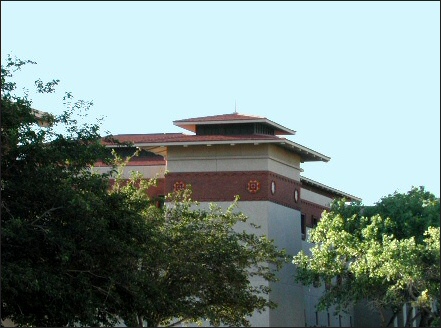

It's strange how misconceptions can sneak in without warning. Things can seem familiar even when in reality they're very different. One example concerns the unusual style of the campus buildings at the University of Texas at El Paso. The architecture, unique in the Western Hemisphere, is that of the Himalayan kingdom of Bhutan. Why? Because nearly a century ago, a dean's wife saw a photograph of a Bhutanese building in National Geographic Magazine. The mountainside setting reminded her of El Paso's Franklin Mountains, and a unique campus architecture was born. Similar in appearance, perhaps, but most of Bhutan lies above 10,000 feet in elevation, while the El Paso desert characteristically is less than 4,000.
Another example of a mind set involved with elevation popped up some
years ago when a world expert on Big-horn Sheep corresponded with a local biologist.
Only after several exchanges of letters did the expert, working with sheep in western
Canada, realize that in the Chihuahuan Desert, timberline lies below the forest,
not above as in the high, alpine habitat of the Rocky Mountains.

Contributor: Arthur H. Harris, Laboratory for Environmental Biology, Centennial Museum, University of Texas at El Paso.
Desert Diary is a joint production of the Centennial Museum and KTEP National Public Radio at the University of Texas at El Paso.

The upper portions of the University of Texas at El Paso Library rise above the greenery. Photograph by A.H. Harris.